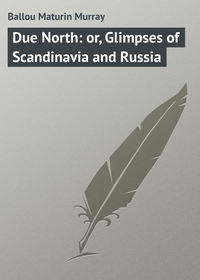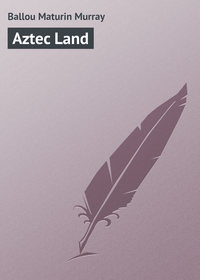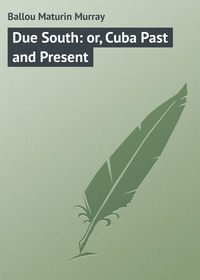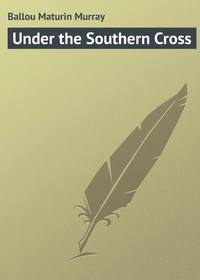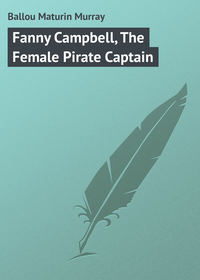 полная версия
полная версияFoot-prints of Travel: or, Journeyings in Many Lands
Botanists declare Japan to be one of the richest of all countries in its vegetation. The cultivation of the soil is thoroughly and skilfully systematized, the greatest possible results being obtained from a given area of land. This is partly due to the careful mode of enrichment applied in liquid form. Its flora is spontaneous and magnificent, repaying the smallest attention by a development which is surprising. Next in importance to the production of rice, which is the staple food of the people, come the mulberry and tea plants, one species of the former not only feeding the silkworm, but it also affords the fibre of which Japanese paper is made, as well as forming the basis of their cordage and some descriptions of dress material. In usefulness the bamboo is most remarkable, growing to a height of sixty feet, and entering into the construction of house-frames, screens, many household articles, mats, pipes, and sails. The camphor-tree, which is seen in such abundance, is a grand ornament in the landscape, lofty and broad-spread. The camphor of commerce is extracted from both the stem and the roots of the tree, which, being cut into small pieces, are subjected to a process of decoction.
No sooner have the Japanese been fairly introduced to American and European civilization, than they have promptly taken a stride of four or five centuries at a single leap, from despotism in its most ultra form to constitutional government. When America opened the port of Yokohama to the commerce of the world, it also opened that hermetically sealed land to the introduction of progressive ideas; and though, unfortunately, the elements of civilization which are most readily assimilated are not always the most beneficial, still the result, taken as a whole, has been worthy of the admiration of the world at large.
The natural intelligence of the Japanese has no superior among any race, however much it may have been perverted, or have lain dormant. There is evidence enough of this in the fact that the young men of that country who are sent here for educational purposes, so frequently win academic prizes and honors over our native scholars, notwithstanding the disadvantages under which a foreigner is inevitably placed.
When we speak of the progress of the Japanese as a nation, we must not forget that the national records of the country date from nearly seven hundred years before the birth of Christ, and that a regular succession of Mikados (supreme rulers), in lineal descent from the founders of their dynasty and race, has since that remote date been carefully preserved.
CHAPTER III
From Nagasaki, in following our proposed course, we sail for Hong Kong, through the Yellow and Chinese seas, a distance of eleven hundred miles. This is very sure to be a rough passage, and the marvel is rather that more vessels are not lost here than that so many are. Seamen call it "the graveyard of commerce." As we enter the magnificent harbor of Hong Kong it is found to be surrounded by a range of lofty hills, which shelter it completely from the sweeping winds that so often prevail in this region. It is the most easterly of the possessions of Great Britain, and is kept in a well-fortified condition, the uniforms of the garrison being a striking feature of the busy streets of the city at all hours of the day. The houses in the European section are large and handsome structures, mostly of stone, rising tier upon tier from the main street to a height of some hundreds of feet on the face of the hill immediately back of the town. On and about the lofty Victoria Peak are many charming bungalows, or cottages, with attractive surroundings, which enjoy a noble prospect of the harbor and country. The streets appropriated to the use of the Europeans are spacious and clean, but the Chinese portion of Hong Kong is quite characteristic of the native race, – very crowded and very dirty, seeming to invite all sorts of epidemic diseases, which in fact nearly always prevail more or less severely among the lower classes.
These streets exhibit strange local pictures. The shoemaker plies his trade in the open thoroughfare; cooking is going on at all hours in the gutters beside the roads; itinerant pedlers dispense food made of mysterious materials; the barber shaves his customer upon the sidewalk; the universal fan is carried by the men, and not by the women. The Chinese mariner's compass does not point to the North Pole, but to the South; that is, the index is placed upon the opposite end of the needle. When Chinamen meet each other upon the streets, instead of shaking each other's hands they shake their own. The men wear skirts, and the women wear pantaloons. The dressmakers are not women, but men. In reading a book a Chinaman begins at the end and reads backwards. We uncover the head as a mark of respect; they take off their shoes for the same purpose, but keep their heads covered. We shave the face; they shave the head and eyebrows. At dinner we begin the meal with soup and fish; they reverse the order and begin with the dessert. The old men fly kites while the boys look on; shuttlecock is their favorite game; it is played, however, not with the hands, but with the feet. White constitutes the mourning color, and black is the wedding hue. The women perform the men's work, and the men wash the clothing. We pay our physicians for attending us in illness; they pay their doctors to keep them well, and stop their remuneration when they are ill. In short, this people seem to be our antipodes in customs as well as being so geographically.
A visit to the water-front of the city affords much amusement, especially at the hour when the market boats with vegetables arrive from the country, and from along shore with fish. Here the people swarm like ants more than like human beings; all eager for business, all crowding and talking at the same time, and creating a confusion that would seem to defeat its own object; namely, to buy and to sell. The vegetables are various and good, the variety of fruit limited and poor in flavor, but the fish are abundant and various in size and color. Nine-tenths of the business on the river-front is done by women, and they are very rarely seen without an infant strapped to their backs, while they are carrying heavy burdens in their hands, or are engaged in rowing or sculling their boats. They trade, make change, and clean the fish quite oblivious of the infant at their backs. A transient visitor to China is not competent to speak of the higher class of women, as no access can be had to domestic life. Only those of the common class appear indiscriminately in public, Oriental exclusiveness wrapping itself about the sex here nearly as rigidly as in Egypt. If ladies go abroad at all, it is in curtained palanquins, borne upon men's shoulders, partially visible through a transparent veil of gauze. Anywhere east of Italy woman is either a toy or a slave.
Hong Kong is an island nearly forty miles in circumference, consisting of a cluster of hills rising almost to the dignity of mountains. The gray granite of which the island is mostly composed, furnishes an excellent material for building purposes, and is largely employed for that object, affording a good opportunity for architectural display. A trip of a hundred miles up the Pearl River takes us to Canton, strangest of strange cities. It has a population of a million and a half, and yet there is not a street of over ten feet in width within the walls, horses and wheeled vehicles being unknown. The city extends a distance of five miles along the river, and a hundred thousand people live in boats. At the corners of the streets, niches in the walls of the houses contain idols, before which incense is constantly burning day and night. The most famous temple in the city is that of the Five Hundred Gods, containing that number of gilded statues of Buddhist sages, apostles, and deified warriors. In some of these sacred structures composed of shrines and miniature temples, among other seeming absurdities we see a number of sacred hogs wallowing in their filth. Disgusting as it appears to an intelligent Christian, it has its palliating features. The Parsee worships fire, the Japanese bows before snakes and foxes, the Hindoo deifies cows and monkeys; why, then, should not the Chinese have their swine as objects of veneration? We may destroy the idols, but let us not be too hard upon the idolaters; they do as well as they know. The idol is the measure of the worshipper. The punishment of crime is swift and sure, the number of persons beheaded annually being almost incredible. Friday is the day for clearing the crowded prison at Canton, and it is not uncommon on that occasion to see a dozen criminals beheaded in the prison yard in eight minutes, one sweeping blow of the executioner's sword decapitating each human body as it stands erect and blindfolded.
One is jostled in the narrow ways by staggering coolies with buckets of the vilest contents, and importuned for money by beggars who thrust their deformed limbs in his face. It is but natural to fear contagion of some sort from contact with such creatures, and yet the crowd is so dense that it is impossible to entirely avoid them. Under foot the streets are wet, muddy, and slippery. Why some deadly disease does not break out and sweep away the people is a mystery.
Philanthropic societies are numerous in the cities of China. Indeed, they are hardly excelled by those of America or Europe. They embrace well-organized orphan asylums, institutions for the relief of indigent widows with families, homes for the aged and infirm, public hospitals, and free schools in every district. As is the case with ourselves, some of these are purely governmental charities, while others are supported by liberal endowments left by deceased citizens. There are depots established to dispense medicines among the poor, and others whence clothing is distributed free of cost. It must be remembered that these societies and organizations are not copied from Western models. They have existed here from time immemorial.
No one has ever been able to trace any affinity between the Chinese language and that of any other people, ancient or modern. It is absolutely unique. No other nation except the Japanese has ever borrowed from it, or mingled any of its elements with its own. It must have originated from the untutored efforts of a primitive people. Like the Egyptian tongue, it was at first probably composed of hieroglyphics, expressing ideas by pictured objects, which in the course of time became systematized into letters or signs expressive of sounds and words.
Though we may dislike the Chinese, it is not wise to shut our eyes to facts which have passed into history. They have long been a reading and a cultured people. Five hundred years before the art of printing was known to Europe, books were multiplied by movable types in China. Every province has its separate history in print, and reliable maps of each section of the country are extant. The civil code of laws is annually corrected and published, a certain degree of education is universal, and eight-tenths of the people can read and write. The estimate in which letters are held is shown by the fact that learning forms the very threshold that leads to fame, honor, and official position. The means of internal communication between one part of China and another are scarcely superior to those of Africa. By and by, however, railways will revolutionize this. Gold and silver are found in nearly every province of the Empire, while the central districts contain the largest coal-fields upon the globe. Nearly one-fourth of the human race is supposed to be comprised within the Chinese Empire. They look to the past, not to the future, and the word "progress" has apparently to them no real significance.
In travelling through portions of the country a depressing sense of monotony is the prevailing feeling one experiences, each section is so precisely like another. There is no local individuality. Their veritable records represent this people as far back as the days of Abraham, and, indeed, they antedate that period. In two important discoveries they long preceded Europe; namely, that of the magnetic compass and the use of gunpowder. The knowledge of these was long in travelling westward through the channels of Oriental commerce, by the way of Asia Minor. There are many antagonistic elements to consider in judging of the Chinese. The common people we meet in the ordinary walks of life are far from prepossessing, and are much the same as those who have emigrated to this country. One looks in vain among the smooth chins, shaved heads, and almond eyes of the crowd for signs of intelligence and manliness. There are no tokens of humor or cheerfulness to be seen, but in their place there is plenty of apparent cunning, slyness, and deceit, if there is any truth in physiognomy. With the Japanese the traveller feels himself constantly sympathizing. He goes among them freely, he enters their houses and drinks tea with them; but not so with the Chinese. In place of affiliation we realize a constant sense of repulsion.
We embark at Hong Kong for Singapore by the way of the China Sea and the Gulf of Siam. The northerly wind favors us, causing the ship to rush through the turbulent waters like a race-horse. The Philippine Islands are passed, and leaving Borneo on our port-bow as we draw near to the Equatorial Line, the ship is steered due west for the mouth of the Malacca Straits. Off the Gulf of Siam we are pretty sure to get a view of a water-spout, and it is to be hoped that it may be a goodly distance from us. Atmospheric and ocean currents meet here, from the China Sea northward, from the Malacca Straits south and west, and from the Pacific Ocean eastward, mingling off the Gulf of Siam, and causing, very naturally, a confusion of the elements, resulting sometimes in producing these wind and water phenomena. A water-spout is a miniature cyclone, an eddy of the wind rotating with such velocity as to suck up a column of water from the sea to the height of one or two hundred feet. This column of water appears to be largest at the top and bottom, and contracted in the middle. If it were to fall foul of a ship and break, it would surely wreck and submerge her. Modern science shows that all storms are cyclonic; that is, they are circular eddies of wind of greater or less diameter. The power of these cyclones is more apparent upon the sea than upon the land, where the obstruction is naturally greater. Yet we know how destructive they sometimes prove in our Western States.
Singapore is the chief port of the Malacca Straits, and is an island lying just off the southern point of Asia, thirty miles long and half as wide, containing a population of about a hundred thousand. Here, upon landing, we are surrounded by tropical luxuriance, the palm and cocoanut trees looming above our heads and shading whole groves of bananas. The most precious spices, the richest fruits, the gaudiest feathered birds are found in their native atmosphere. There are plenty of Chinese at Singapore. They dominate the Strait settlements, monopolizing all branches of small trade, while the natives are lazy and listless, true children of the equatorial regions. Is it because Nature is here so bountiful, so lovely, so prolific, that her children are sluggish, dirty, and heedless? It would seem to require a less propitious climate, a sterile soil, and rude surroundings to awaken human energy and to place man at his best. The common people are seen almost naked, and those who wear clothes at all, affect the brightest colors. The jungle is dense, tigers abound, and men, women, and children are almost daily killed and eaten by them.
It is easy to divine the merchantable products of the island from the nature of the articles which are seen piled up for shipment upon the wharves, consisting of tapioca, cocoanut oil, gambia, tin ore, indigo, tiger-skins, coral, gutta-percha, hides, gums, and camphor.
There is no winter or autumn here, no sere and yellow leaf period, but seemingly a perpetual spring, with a temperature almost unvarying; new leaves always swelling from the bud, flowers always in bloom, the sun rising and setting within five minutes of six o'clock during the entire year. Singapore enjoys a soft breeze most of the day from across the Bay of Bengal, laden with fragrant sweetness from the spice-fields of Ceylon.
Each place we visit has its peculiar local pictures. Here, small hump-backed oxen are seen driven about at a lively trot in place of horses. Pedlers roam the streets selling drinking-water, with soup, fruit, and a jelly made from sugar and sea-weed, called agar-agar. Native houses are built upon stilts to keep out the snakes and tigers. The better class of people wear scarlet turbans and white cotton skirts; others have parti-colored shawls round their heads, while yellow scarfs confine a cotton wrap about the waist. Diminutive horses drag heavy loads, though themselves scarcely bigger than large dogs. Itinerant cooks, wearing a wooden yoke about their necks, with a cooking apparatus on one end, and a little table to balance it on the other, serve meals of fish and rice upon the streets to laborers and boatmen, for a couple of pennies each. Money has here, as in most Eastern countries, a larger purchasing power than it has with us in the West. The variety of fruit is greater than in China or Japan, and there are one or two species, such as the delicious mangosteen, which are found indigenous in no other region.
The stranger, upon landing at Singapore, is hardly prepared to find such excellent modern institutions as exist here. Among them are an attractive museum, a public library, a Protestant cathedral, a hospital, public schools, and a fine botanical garden. The island belongs to the English government, having been purchased by it so long ago as 1819, from the Sultan of Johore, – wise forethought, showing its importance as a port of call between England and India.
A two days' sail through waters which seem at night like a sea of phosphorescence, every ripple producing flashes of light, will take us to the island of Penang, the most northerly port of the Straits. It resembles Singapore in its people, vegetation, and climate, enjoying one long, unvarying summer. While the birds and butterflies are in perfect harmony with the loveliness of nature, while the flowers are glorious in beauty and in fragrance, man alone seems out of place in this region. Indolent, dirty, unclad, he does nothing to improve such wealth of possibilities as nature spreads broadcast only in equatorial islands. He does little for himself, nothing for others, while the sensuous life he leads poisons his nature, so that virtue and vice have no relative meaning for him. We speak now of the masses, the common people. Noble exceptions always exist. In size Penang is a little smaller than Singapore. Its wooded hills of vivid greenness rise above the town and surrounding sea in graceful undulations, growing more and more lofty as they recede inland, until they culminate in three mountain peaks. Penang is separated from the mainland by a narrow belt of sea not more than three miles wide, giving it a position of great commercial importance.
The areca-palm, known as the Penang-tree, is the source of the betel-nut, which is chewed by the natives as a stimulant; and as it abounds on the island, it has given it the name it bears. The town covers about a square mile, through which runs one broad, main street, intersected by lesser thoroughfares at right angles. A drive about the place gives us an idea that it is a thrifty town, but not nearly so populous as Singapore. It is also observable that the Chinese element predominates here. The main street is lined by shops kept by them. The front of the dwellings being open, gives the passer-by a full view of all that may be going on inside the household. Shrines are nearly always seen in some nook or corner, before which incense is burning, this shrine-room evidently being also the sleeping, eating, and living room. The islands of Penang and Singapore are free from malarial fevers, and probably no places on earth are better adapted to the wants of primitive man, for they produce spontaneously sufficient nutritious food to support life independent of personal exertion. The home of the Malay is not so clean as that of the ant or the birds; even the burrowing animals are neater. The native women are graceful and almost pretty, slight in figure, and passionately fond of ornaments, covering their arms and ankles with metallic rings, and thrusting silver and brass rings through their ears, noses, and lips.
The cocoanut-tree is always in bearing on the islands of the Straits, and requires no cultivation. Of the many liberal gifts bestowed upon the tropics, this tree is perhaps the most valuable. The Asiatic poet celebrates in verse the hundred uses to which the trunk, the branches, the leaves, the fruit, and the sap are applied. In Penang a certain number of these trees are not permitted to bear fruit. The embryo bud from which the blossoms and nuts would spring is tied up to prevent its expansion; a small incision then being made at the end, there oozes in gentle drops a pleasant liquor called toddy, which is the palm wine of the poet. This, when it is first drawn, is cooling and wholesome, but when it is fermented it produces a strong, intoxicating spirit. The banana is equally prolific and abundant, and forms a very large portion of the food of the common people. In the immediate neighborhood of the town are some plantations conducted by Europeans who live in neat cottages, with enclosures of cultivated flowers, and orchards of fruit-trees. Still further inland are large gardens of bread-fruit, nutmegs, cinnamon, pepper, and other spices. There are also large fields of sugar-cane, tobacco, and coffee. The delicate little sensitive plant here grows wild, and is equally tremulous and subsiding at the touch of human hands, as it is with us. Lilies are seen in wonderful variety, the stems covered with butterflies nearly as large as humming-birds.
Penang originally belonged to the Malay kingdom, but about the year 1786 it was given to an English sea-captain as a marriage-portion with the King of Keddah's daughter, and by him, in course of time, it was transferred to the East India Company. When Captain Francis Light received it with his dusky bride, it was the wild, uncultivated home of a few hundred fishermen. To-day it has a population of nearly a hundred thousand.
CHAPTER IV
Our course now lies across the Indian Ocean, westward. The rains which we encounter are like floods, but the air is soft and balmy, and the deluges are of brief continuance. The nights are serene and bright, so that it is delightful to lie awake upon the deck of the steamer and watch the stars now and then screened by the fleecy clouds. In the daytime it is equally interesting to observe the ocean. Large sea-turtles come to the surface to sun themselves, stretching their awkward necks to get a sight of our hull; dolphins and flying-fish are too abundant to be a curiosity; big water-snakes raise their slimy heads a couple of feet above the sea; the tiny nautilus floats in myriads upon the undulating waves, and at times the ship is surrounded by a shoal of the indolent jelly-fish. Mirage plays us strange tricks in the way of optical delusion in these regions. We seem to be approaching land which we never reach, but which at the moment when we should fairly make it, fades into thin air.
Though the ocean covers more than three-quarters of the globe, but few of us realize that it represents more of life than does the land. We are indebted to it for every drop of water distributed over our hills, plains, and valleys; for from the ocean it has arisen by evaporation to return again through myriads of channels. It is really a misnomer to speak of the sea as a desert waste; it is teeming with inexhaustible animal and vegetable life. A German scientist has with unwearied industry secured and classified over nine hundred species of fishes from this division of the Indian Ocean over which our course takes us. Many of these are characterized by colors as dazzling and various as those of gaudy-plumed tropical birds and flowers.
Our next objective point is Colombo, the capital of Ceylon, situated about thirteen hundred miles from the mouth of the Malacca Straits. Here we find several large steamships in the harbor, stopping briefly on their way to or from China, India, or Australia; and no sooner do we come to anchor than we are surrounded by the canoes of the natives. They are of very peculiar construction, being designed to enable the occupants to venture out, however rough the water may chance to be, and the surf is always raging in these open roadsteads. The canoes consist of the trunk of a tree hollowed out, some twenty feet in length, having long planks fastened lengthwise so as to form the sides or gunwales of the boat, which is a couple of feet deep and about as wide. An outrigger, consisting of a log of wood about one-third as long as the canoe, is fastened alongside at a distance of six or eight feet, by means of two arched poles of well-seasoned bamboo. This outrigger prevents any possibility of upsetting the boat, but without it so narrow a craft could not remain upright, even in a calm sea. The natives face any weather in these little vessels.


